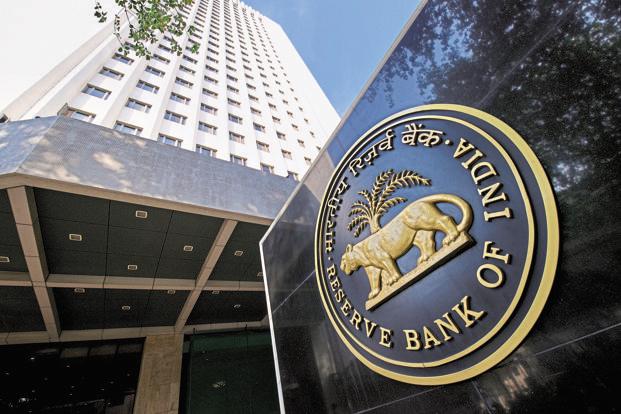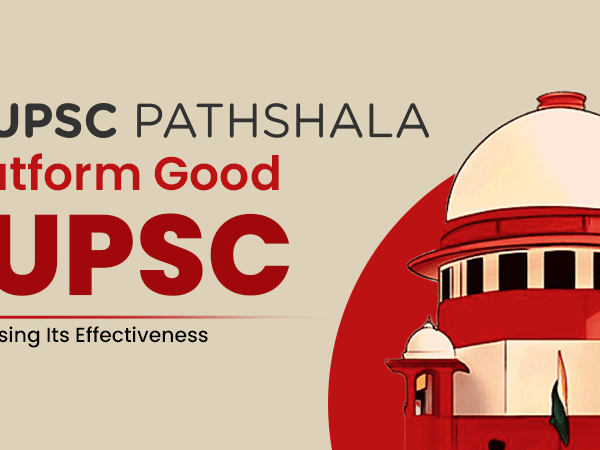Credit and Monetary policy is the macroeconomic policy laid down by the central bank. It involves management of money supply and interest rate and is the demand side economic policy used by the government of a country to achieve macroeconomic objectives like inflation, consumption, growth and liquidity. In India, monetary policy of the Reserve Bank of India is aimed at managing the quantity of money in order to meet the requirements of different sectors of the economy and to increase the pace of economic growth. The RBI implements the monetary policy through open market operations, bank rate policy, reserve system, credit control policy, moral persuasion and through many other instruments. Using any of these instruments will lead to changes in the interest rate, or the money supply in the economy. Monetary policy can be expansionary and contractionary in nature. Increasing money supply and reducing interest rates indicate an expansionary policy. The reverse of this is a contractionary monetary policy. For instance, liquidity is important for an economy to spur growth. To maintain liquidity, the RBI is dependent on the monetary policy. By purchasing bonds through open market operations, the RBI introduces money in the system and reduces the interest rate.
The main objectives of Monetary Policy are:
- To maintain price stability.
- To ensure adequate flow of credit to productive sectors so as to assist growth.
- Arrangement of full employment.
- Expansion of credit facility
- Equality & Justice Stability in exchange rate.
- Promotion of Fixed Deposit.
- Equitable distribution of Credit.
There are two types of instruments of the monetary policy
a) Quantitative and b) Qualitative.
Let us understand each of these instruments in detail,
Quantitative:
- Cash Reserve Ratio(CRR): Commercial Banks are required to hold a certain proportion of their deposits in the form of cash with RBI. CRR is the minimum amount of cash that commercial banks have to keep with the RBI at any given point in time. RBI uses CRR either to drain excess liquidity from the economy or to release additional funds needed for the growth of the economy. For example, if the RBI reduces the CRR from 5% to 4%, it means that commercial banks will now have to keep a lesser proportion of their total deposits with the RBI making more money available for business. Similarly, if RBI decides to increase the CRR, the amount available with the banks goes down. Current CRR: 4%.
- Statutory Liquidity Ratio (SLR): SLR is the amount that commercial banks are required to maintain in the form of gold or government approved securities before providing credit to the customers. SLR is stated in terms of a percentage of total deposits available with a commercial bank and is determined and maintained by the RBI in order to control the expansion of bank credit. Current SLR: 19.5%
- Bank Rate: It is a rate at which RBI lend long term loan to commercial banks. Bank rate is a tool which RBI uses for maintaining money supply. Any revision in bank rate by RBI is a signal to banks to revise deposit rates as well as prime lending rate (PLR is the rate at which bank lend to the bank customers). Current Bank Rate: 6.25%
- Repo Rate: The rate at which the RBI is willing to lend short-term loans to commercial banks is called Repo Rate. Whenever commercial banks have any shortage of funds they can borrow from the RBI, against securities. If the RBI increases the Repo Rate, it makes borrowing expensive for commercial banks and vice versa. As a tool to control inflation, RBI increases the Repo Rate, making it more expensive for the banks to borrow from the RBI with a view to restrict the availability of money. The RBI will do the exact opposite in a deflationary environment when it wants to encourage growth. Current Repo Rate: 6%
- Reverse Repo Rate: The rate at which the RBI is willing to borrow from the commercial banks is called reverse repo rate. If the RBI increases the reverse repo rate, it means that the RBI is willing to offer lucrative interest rate to commercial banks to park their money with the RBI. This results in a reduction in the amount of money available for the bank’s customers as banks prefer to park their money with the RBI as it involves higher safety. This naturally leads to a higher rate of interest which the banks will demand from their customers for lending money to them. Current Rate: 5.75%
- Marginal Standing Facility(MSF): MSF is a very short term borrowing scheme for scheduled commercial banks. Banks may borrow funds through MSF during severe cash shortage or acute shortage of liquidity. Banks often face liquidity shortfalls due to mismatch in their deposit and loan portfolios. These are usually very short term and banks can borrow from RBI for one day period by offering dated government securities. MSF had been introduced by RBI to reduce volatility in the overnight lending rates in the inter-bank market and to enable smooth monetary transmission in the financial system. Under MSF, banks can borrow funds overnight up to 1% (100 basis points) of their net demand and time liabilities (NDTL) i.e. 1% of the aggregate deposits and other liabilities of the banks. NDTL liabilities represent a bank’s deposits and borrowings from others. In a move to stem the continuing fall of rupee, the RBI raised the MSF rate to 300 basis points (i.e. 3%) above the repo rate in July 2013. Thus, both rate of borrowing and percent of borrowing allowed under MSF can be varied by RBI. Current MSF: 6.25%
- Base Rate: Base Rate is the interest rate below which Scheduled Commercial Banks (SCBs) will lend no loans to its customers—its means it is like prime lending rate (PLR) and the benchmark prime lending Rate (BPLR) of the past and is basically a floor rate of interest. Current Base Rate: 8.65% – 9.45%
- Marginal Cost of Funds Lending Rate(MCLR): From the financial year 2016-17 (i.e., from 1st April, 2016), banks in the country have shifted to a new methodology to compute their lending rate. The new methodology—MCLR (Marginal Cost of funds based Lending Rate)— which was articulated by the RBI in December 2015. The main features of the MCLR are as follows:
i) it will be a tenor linked internal benchmark, to be reset on annual basis.
ii) actual lending rates will be fixed by adding a spread to the MCLR.
iii) to be reviewed every month on a pre-announced date.
iv) existing borrowers will have the option to move to it.
v) banks will continue to review and publish ‘Base Rate’ as hitherto. Current rate: 7.65% – 8.05%. - Call Money Market: The call money market is an important segment of the money market where borrowing and lending of funds take place on over night basis. Participants in the call money market in India currently include scheduled commercial banks (SCBs)—excluding regional rural banks), cooperative banks (other than land development banks), insurance. Prudential limits, in respect of both outstanding borrowing and lending transactions in the call money market for each of these entities, are specified by the RBI. Current Rate: 4.90 % – 6.10%
- Open Market Operations (OMOs): OMOs are conducted by the RBI via the sale/purchase of government securities (G-Sec) to/from the market with the primary aim of modulating rupee liquidity conditions in the market. OMOs are an effective quantitative policy tool in the armoury of the RBI, but are constrained by the stock of government securities available with it at a point in time. Other than the institutions, now individuals will also be able to participate in this market (as per the Union Budget 2016–17).
- Liquidity Adjustment Framework(LAF): The LAF is the key element in the monetary policy operating framework of the RBI (introduced in June 2000). On daily basis, the RBI stands ready to lend to or borrow money from the banking system, as per the need of the time, at fixed interest rates (repo and reverse repo rates). Together with moderating the fund mismatches of the banks, LAF operations help the RBI to effectively transmit interest rate signals to the market. The recent changes regarding a cap on the repo borrowing and provision of the term repo have changed the very dynamics of this facility after 2013.
- Market Stabilisation Scheme(MSS): This instrument for monetary management was introduced in 2004. Surplus liquidity of a more enduring nature arising from large capital inflows is absorbed through sale of short-dated government securities and treasury bills. The mobilised cash is held in a separate government account with the Reserve Bank. The instrument thus has features of both, SLR and CRR.
Qualitative:
- Fixing Margin Requirements: The margin refers to the “proportion of the loan amount which is not financed by the bank”. Or in other words, it is that part of a loan which a borrower has to raise in order to get finance for his purpose. A change in a margin implies a change in the loan size. This method is used to encourage credit supply for the needy sector and discourage it for other non-necessary sectors. This can be done by increasing margin for the non-necessary sectors and by reducing it for other needy sectors. Example:- If the RBI feels that more credit supply should be allocated to agriculture sector, then it will reduce the margin and even 85-90 percent loan can be given.
Consumer Credit Regulation: Under this method, consumer credit supply is regulated through hire-purchase and installment sale of consumer goods. Under this method the down payment, installment amount, loan duration, etc is fixed in advance. This can help in checking the credit use and then inflation in a country. - Publicity: This is yet another method of selective credit control. Through it Central Bank (RBI) publishes various reports stating what is good and what is bad in the system. This published information can help commercial banks to direct credit supply in the desired sectors. Through its weekly and monthly bulletins, the information is made public and banks can use it for attaining goals of monetary policy.
- Credit Rationing: Central Bank fixes credit amount to be granted. Credit is rationed by limiting the amount available for each commercial bank. This method controls even bill rediscounting. For certain purpose, upper limit of credit can be fixed and banks are told to stick to this limit. This can help in lowering banks credit exposure to unwanted sectors.
- Moral Suasion: It implies to pressure exerted by the RBI on the indian banking system without any strict action for compliance of the rules. It is a suggestion to banks. It helps in restraining credit during inflationary periods. Commercial banks are informed about the expectations of the central bank through a monetary policy. Under moral suasion central banks can issue directives, guidelines and suggestions for commercial banks regarding reducing credit supply for speculative purposes.
- Control Through Directives: Under this method the central bank issue frequent directives to commercial banks. These directives guide commercial banks in framing their lending policy. Through a directive the central bank can influence credit structures, supply of credit to certain limit for a specific purpose. The RBI issues directives to commercial banks for not lending loans to speculative sector such as securities, etc beyond a certain limit.
- Direct Action: Under this method the RBI can impose an action against a bank. If certain banks are not adhering to the RBI’s directives, the RBI may refuse to rediscount their bills and securities. Secondly, RBI may refuse credit supply to those banks whose borrowings are in excess to their capital. Central bank can penalize a bank by changing some rates. At last it can even put a ban on a particular bank if it does not follow its directives and work against the objectives of the monetary policy.
These are various selective instruments of the monetary policy. However the success of these tools is limited by the availability of alternative sources of credit in economy, working of the Non-Banking Financial Institutions (NBFIs), profit motive of commercial banks and undemocratic nature off these tools. But a right mix of both quantitative and qualitative tools of monetary policy can give the desired results.






Hi there! I could have sworn I’ve been to this site before but after
checking through some of the post I realized it’s new to
me. Anyways, I’m definitely glad I found it and I’ll be
bookmarking and checking back often!
Hi there, I enjoy reading all of your article.
I wanted to write a little comment to support you.